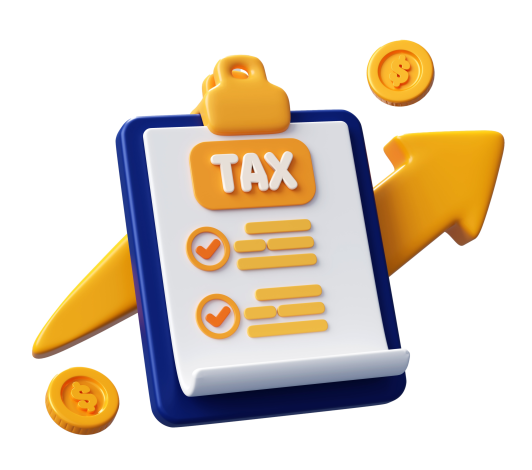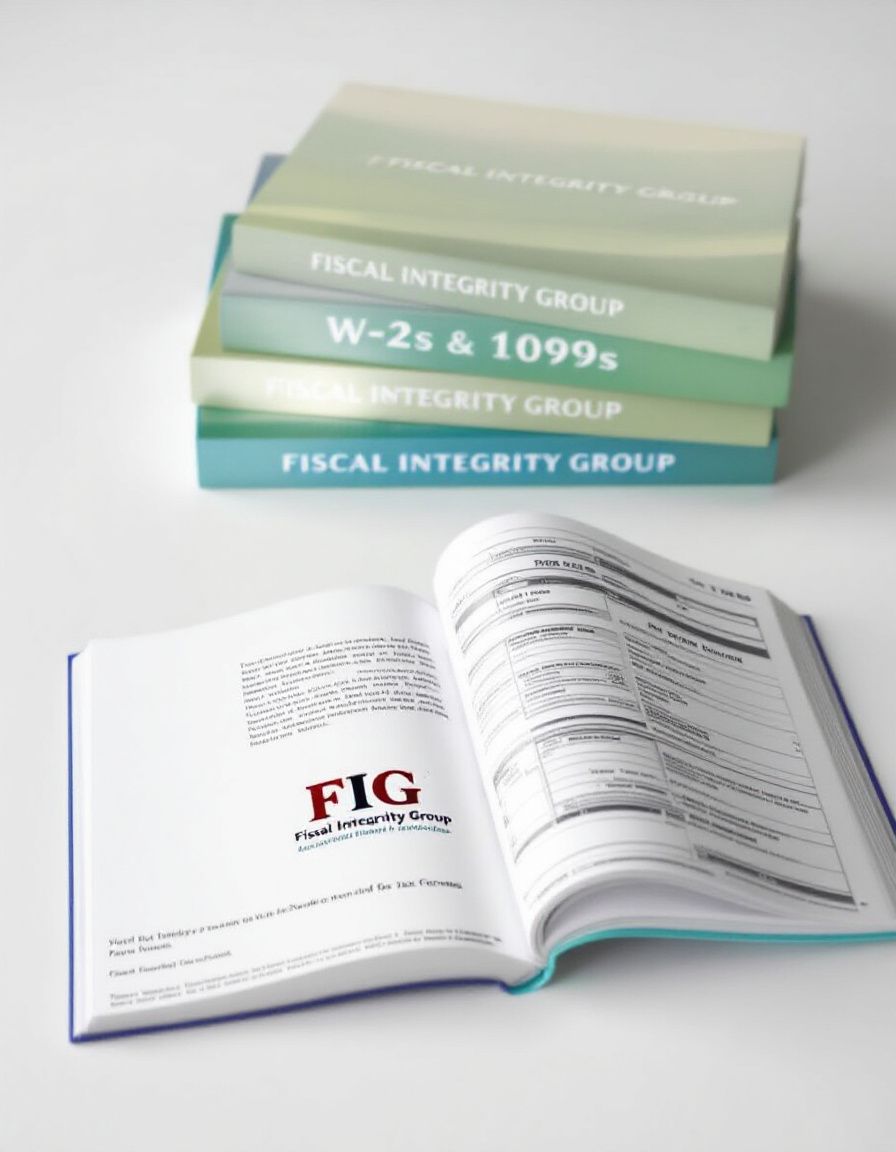Navigating Year-End Tax Forms for Individuals and Businesses
End-of-year tax forms are a crucial part of keeping your business compliant and your employees happy. At Fiscal Integrity Group, we take the stress out of tax season by preparing and filing all required end-of-year forms, including W-2s, 1099s, and business income statements, with speed and accuracy. Our team ensures every detail is correct, deadlines are met, and you stay in full compliance with federal and state tax regulations. With FIG handling your end-of-year tax forms, you can avoid costly mistakes, reduce your audit risk, and close out your financial year with confidence and peace of mind.
Year-end tax forms
Year-end tax forms are documents used by individuals and businesses to report income, deductions, and other financial information to the IRS and state tax authorities. The specific forms you need depend on your income sources and business structure.
Common Forms for Individuals
- Form 1040: This is the standard U.S. Individual Income Tax Return. Most people use this form to report their total income, calculate their tax liability, and determine if they owe taxes or are due a refund.
- W-2: Your employer provides this form, which shows the wages you earned and the amount of federal, state, and local taxes withheld from your paychecks. You'll need this to fill out your Form 1040.
- Form 1099 Series: These forms report various types of non-employee income. For example, Form 1099-NEC is for non-employee compensation (like for freelancers or independent contractors), Form 1099-INT is for interest income from a bank, and Form 1099-DIV is for dividend income from investments.
- Schedule C: This is an attachment to Form 1040 for sole proprietors and single-member LLCs. It's where you report your business's profits and losses, as well as business expenses.
Common Forms for Businesses
The tax forms a business files depend on its legal structure.
- Form 1120: C-corporations use this form to report their income, deductions, and tax liability. A C-corp is taxed separately from its owners.
- Form 1120-S: S-corporations use this form. S-corps are "pass-through" entities, meaning the business's profits and losses are passed through to the owners' personal tax returns to be taxed at the individual level.
- Form 1065: This form is for partnerships. Like S-corps, partnerships are pass-through entities, and this form reports the business's income and expenses. Each partner then receives a Schedule K-1 that shows their share of the income, which they report on their individual Form 1040.
- Forms 940 & 941: These are employer-related forms. Form 941 is filed quarterly to report income taxes, Social Security tax, and Medicare tax withheld from employee pay. Form 940 is the annual return for the Federal Unemployment Tax Act (FUTA).
End-Year Tax Forms
End-Year tax forms refer to income tax forms an individual or business needs to fill out and file by the yearly tax deadline.
The forms required vary depending on whether you're filing as an individual employed by a company, self-employed, or filing as a business entity.
Ready to file your business taxes? Don’t worry! Fiscal Integrity Group can help you file your taxes and optimize your tax bill. Contact us! →
Key Considerations for Tax Compliance
Electronic Filing
SSA recommends e-filing for Form W-2. W-3 only for paper filing.
State Requirements
Comply with state-specific reporting schedules and regulations.
ACA Compliance
Large employers must file Form 1094-C as a cover sheet.
Deadlines
Adhere to all deadlines to avoid potential penalties.
QuickBooks Online Experts
1. Form W-2
Reports employee wages and taxes. Due to employees by January 31.
2. Form W-3
Summarizes total wages and withholdings. Submit to SSA by January 31.
3. Form 940
Reports federal unemployment taxes. Due January 31 or February 12.
4. Form 944
For small employers. Due January 31 or February 12 with monthly deposits.
Catch Up on Overdue Taxes
Built on integrity and expertise, our firm delivers exceptional personalized service that goes beyond standard accounting practices.
Assessment
Review your tax situation
Strategy
Develop a plan to file back taxes
Preparation
Complete all necessary forms
Filing
Submit to IRS and state authorities
Resolution
Negotiate payment plans if needed
Book A Free Consultation



